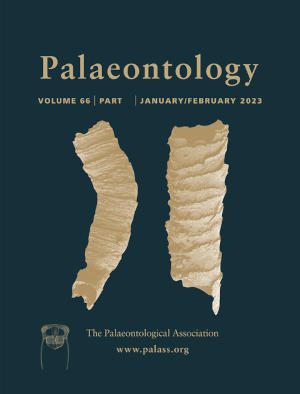Article: An early Cambrian polyp reveals a potential anemone-like ancestor for medusozoan cnidarians
Publication: Palaeontology
Volume:
66
Part:
1
Publication Date:
2023
Article number:
e12637
Author(s):
Yang Zhao, Luke A. Parry, Jakob Vinther, Frances S. Dunn, Yu-Jing Li, Fan Wei, Xian-Guang Hou, and Pei-Yun Cong
Abstract
Abstract Cnidarians form a disparate phylum of animals and their diploblastic body plan represents a key step in animal evolution. Cnidarians are split into two main classes; anthozoans (sea anemones, corals) are benthic polyps, while medusozoans (hydroids, jellyfishes) generally have alternating life cycle stages of polyps and medusae. A sessile polyp is present in both groups and is widely regarded as the ancestral form of their last common ancestor. However, the nature and anatomy of the ancestral polyp, particularly of medusozoans, is controversial, owing to the divergent body plans of the extant lineages and the scarcity of medusozoan soft tissues in the fossil record. Here, we redescribe Conicula striata Luo \& Hu from the early Cambrian Chengjiang biota, south China, which has previously been interpreted as a polyp, lophophorate or deuterostome. Through re-examination of the holotype and 51 exceptionally preserved specimens, we show that C. striata possessed features of both anthozoans and medusozoan polyps. A conical, annulated organic skeleton (periderm) fully encasing a polyp is found in fossil and living medusozoans, while a tubular pharynx extending from the mouth into a gut partitioned by c. 28 mesenteries, resembling the actinopharynx of anthozoans. Our phylogenetic analyses recover C. striata as a stem-group medusozoan, implying that the wealth of medusozoan diversity derived, ultimately, from an anemone-like ancestor.
